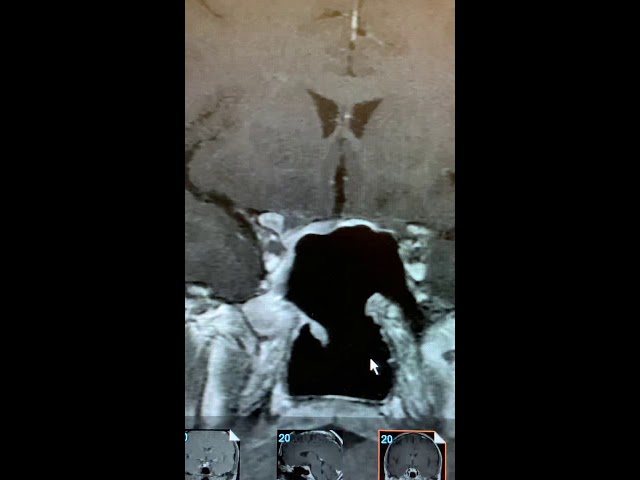This is the fourth in a series of pituitary MRI’s. This video describes the normal sinonasal anatomy and provides a stunning description of how this area is affected after endoscopic pituitary surgery. The comparison and visuals, coupled with Dr. Blevins explanations, are quite compelling.
Stay tuned for more videos in this series coming later this week.
Click here to watch the other MRI videos in the series.
© 2019 – 2024, J D Faccinetti. All rights reserved.

Hi
I am pituitary surgeon from Poland I am quite experienced in both endo and microsurgical approaches ( I did >2000 surgeries).
I disagree with your opinion on endoscopic surgeries. As literature and our experience shows for both methods the sino-nasal complications (esp. Chronic sinusitis or the so called empty nose syndrome ) are underreported in neurosurgical series. The problem for endoscopic surgery concerns about 5-30 % of patients. The similar values were shown for microsurgical series with even higher numbers of septal perforations.
I agree with you that the so called extended approaches or endoscopic approaches using the so called septal mucosal flaps for sellar closure are too much for almost every pit adenoma, and the morbidity of such approaches are much higher. Unfortunatelly there is a tendency especially in US to promote those type of surgeries as a remedy for CSF leak issues.
We as many other surgeons try to minimize the trauma for the nosopharynx, so we use the so called one and a half approach ( submucosal resction of posterior nasal septum and spehnoidotmy form one nosrill, this gives the same sinus/septum tramua as during direct microsurgical transnasal apprach proposed by Griffith in ’80. We also perform strict ENT controls within 3 & 8 weeks post op with nasal and sphenoid sinus debridment. With this policy the number of nasal complications is for sure lower (3-5%) than from the microsurgical era .
I think there is no need to discourage patients form endoscopic pituitary surgery. We saw a number of terrible noses after microsurgical operations and we can see patients of us or from other centers after endoscopic surgeries with almost no or minimal sinonasal changes.
The problem is probably in the delicacy and experience for those kind of surgery.But again I will rise my hand for no septal flap for normal adenoma ( this is really to much trauma).